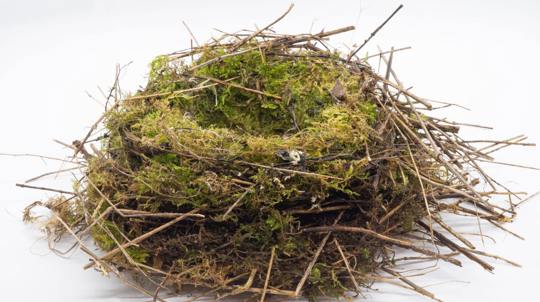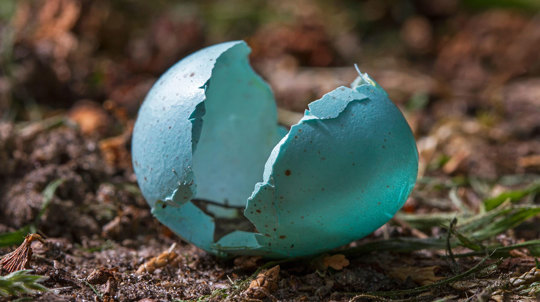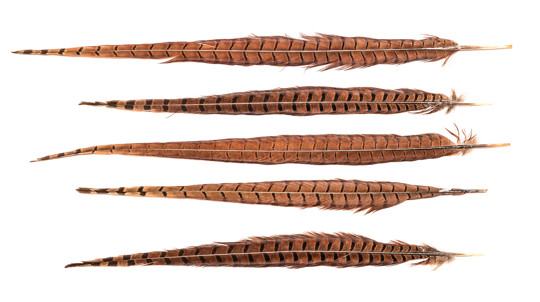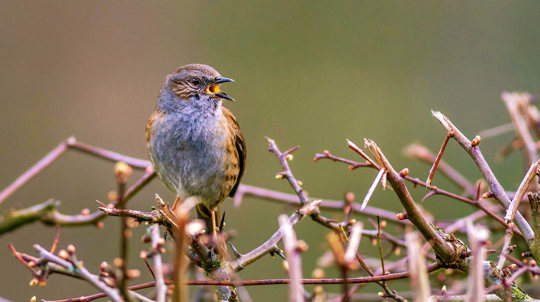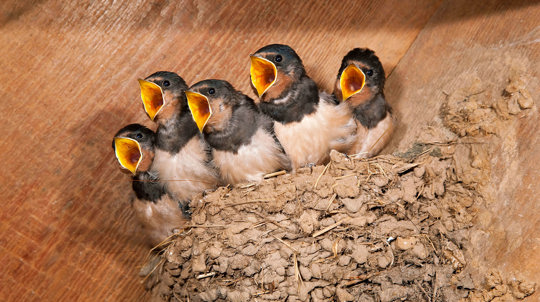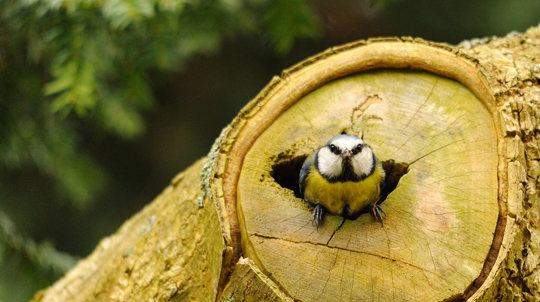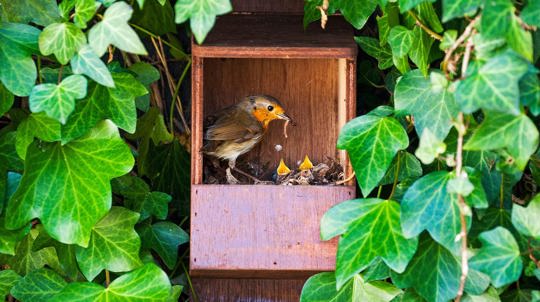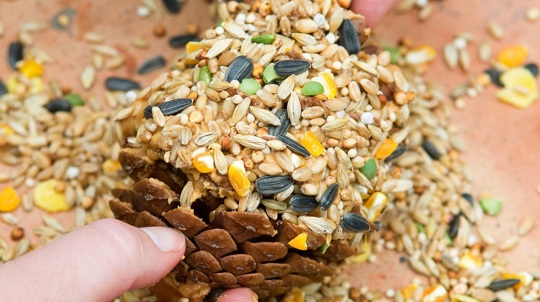Blackbirds produce several broods in a season. If you see a female feeding grown up chicks, she's probably finished nesting for the year.
Baby bird identification: UK garden birds

Content manager
Garden bird chicks - known as fledglings when out of the nest - can be a challenge to tell apart, particularly when they're not with their parents. They often lack the bright colours and distinguishing features of adult birds, but there are a few clues we can look for.
House sparrow (Passer domesticus)
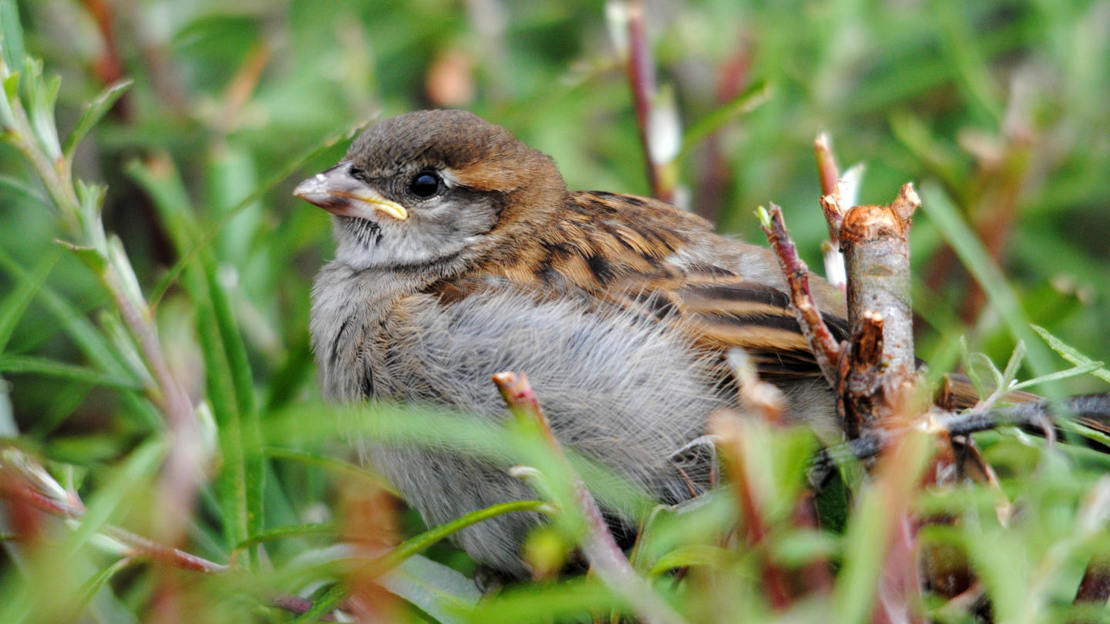
Appearance
Juveniles of both sexes look similar to female adults with brown and black upper parts and a fluffy grey undercarriage. Look for the tell-tale yellow gape around the base of the beak which helps signal 'feed me!' to parent birds.
When to see
Youngsters usually start turning up in May and June.
Robin (Erithacus rubecula)
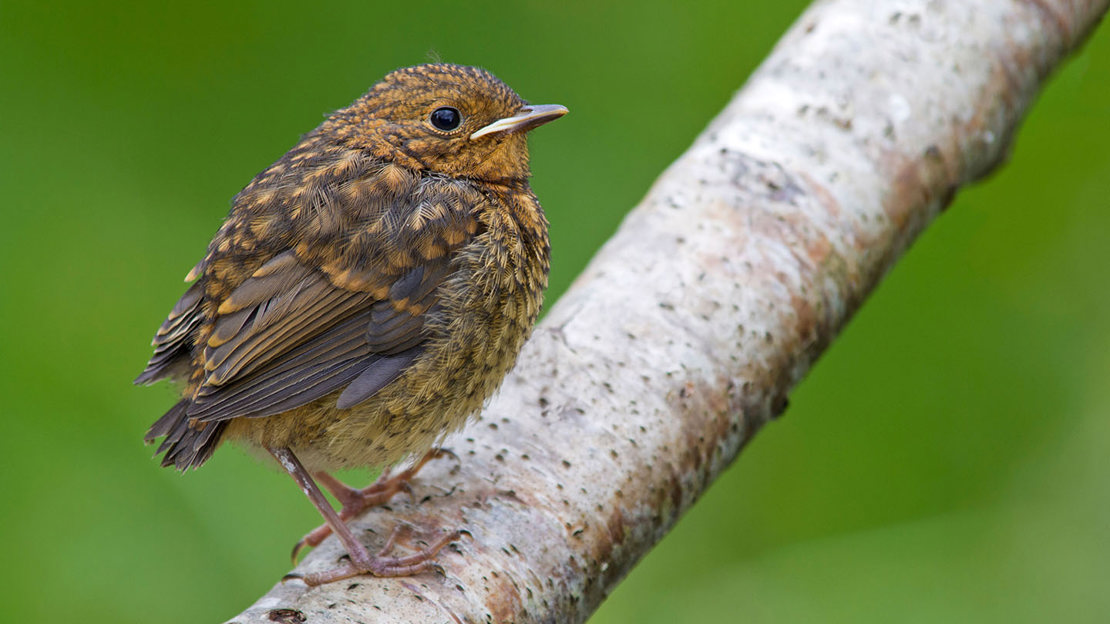
Appearance
These babies lack the red tummy of their parents but can still be recognised by their typical robin pose when perched. Look for their stumpy tail when first fledged and warm brown mottling.
When to see
Can be seen as early as April. Look for them fluttering their wings at border edges while a parent forages within.
Long-tailed tit (Aegithalos caudatus)
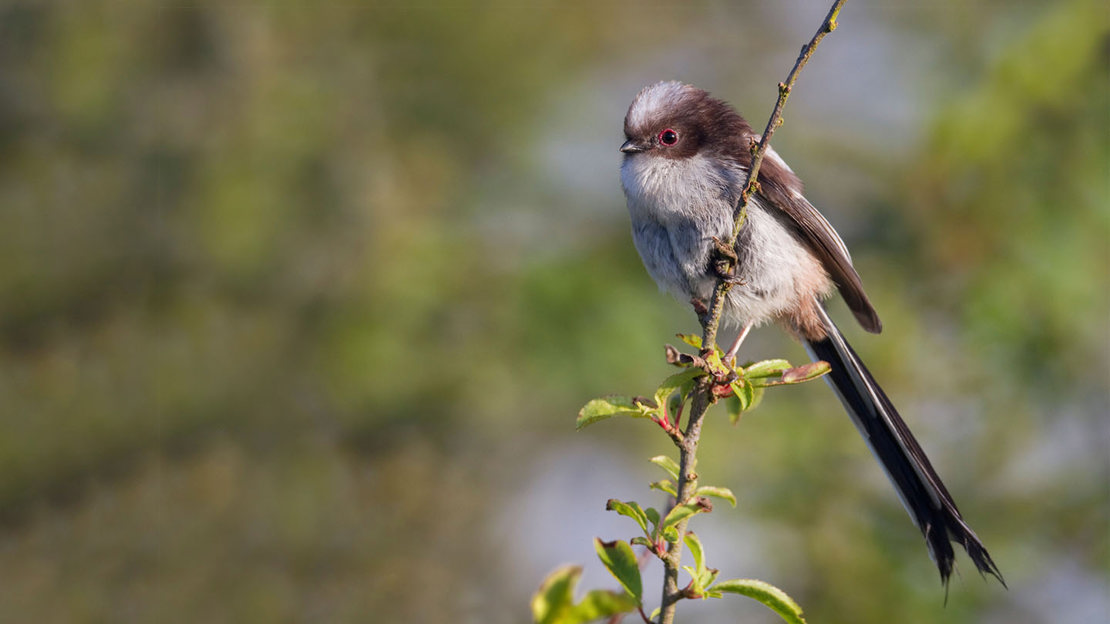
Appearance
The long tail is a bit of a giveaway at any age. Youngsters have a distinctive dark, mask-like band across their faces.
When to see
One of our earliest nesters. Fledglings start to appear from late April and often stick close together, sometimes snuggling in rows on branches. They might also be fed by many adults from their group.
Blackbird (Turdus merula)
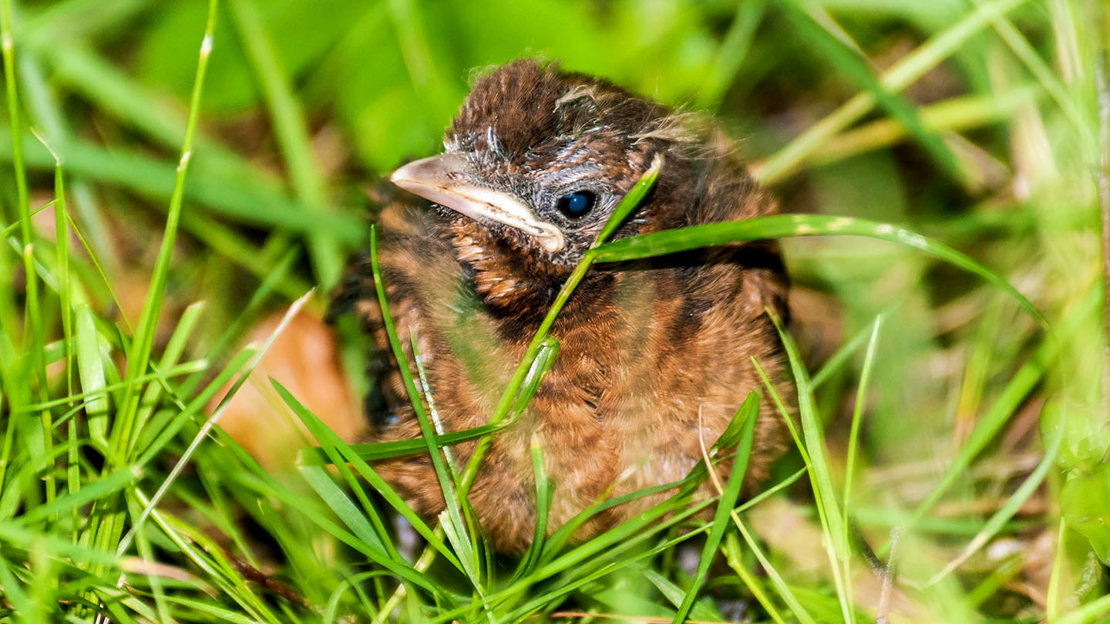
Appearance
Young blackbirds are brown like the females but scruffier, with stumpy tails when first fledged. They often look larger than their parents thanks to their downy feathers.
When to see
Look for them from April until early autumn. They can be particularly noisy and demanding when begging for food, often sticking close to their hard-working parent.
Goldfinch (Carduelis carduelis)
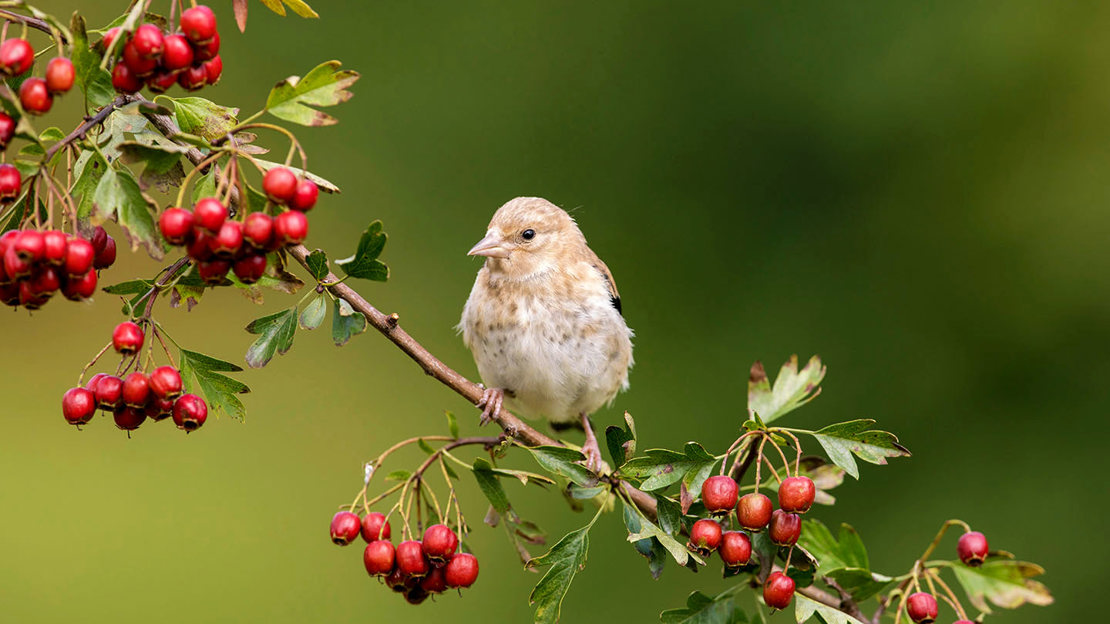
Appearance
These babies have none of the fancy face markings of their parents and can look quite pale in comparison. Look instead for the fine pointed beak and the black and yellow barring on the wings.
When to see
Can be seen with parents on feeders around June.
Starling (Sturnus vulgaris)
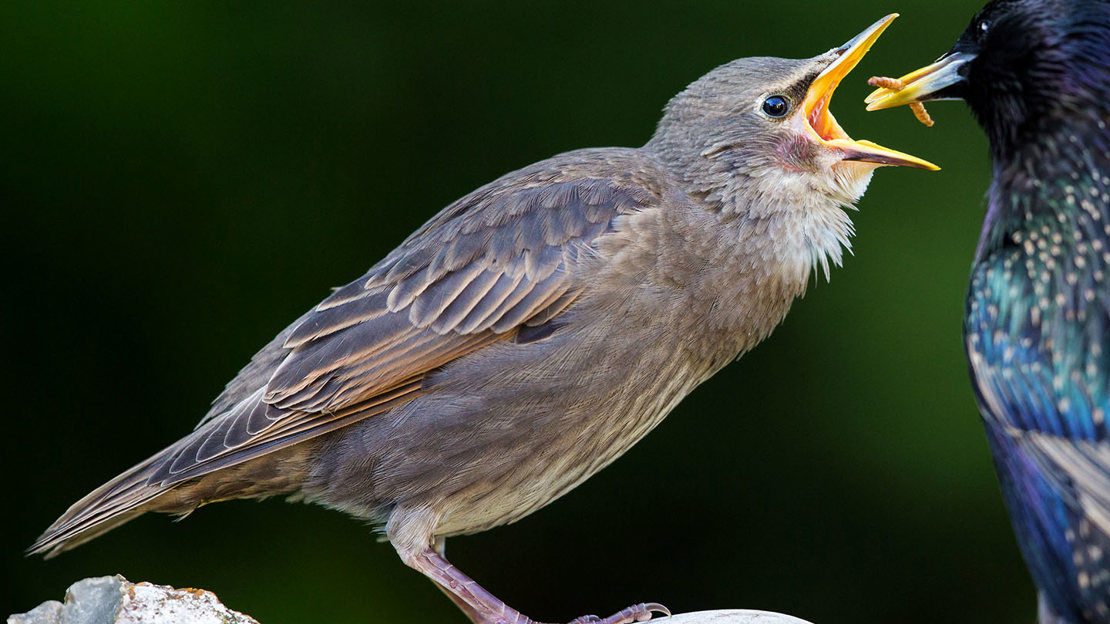
Appearance
Unlike their handsome parents, juvenile starlings are a dull brown all over. Their bright orange gape directs the delivery of insects from their parents (and sometimes even other birds!) along with their demanding calls.
When to see
Look for them following adults across lawns and grassland from May onwards.
Great spotted woodpecker (Dendrocopos major)
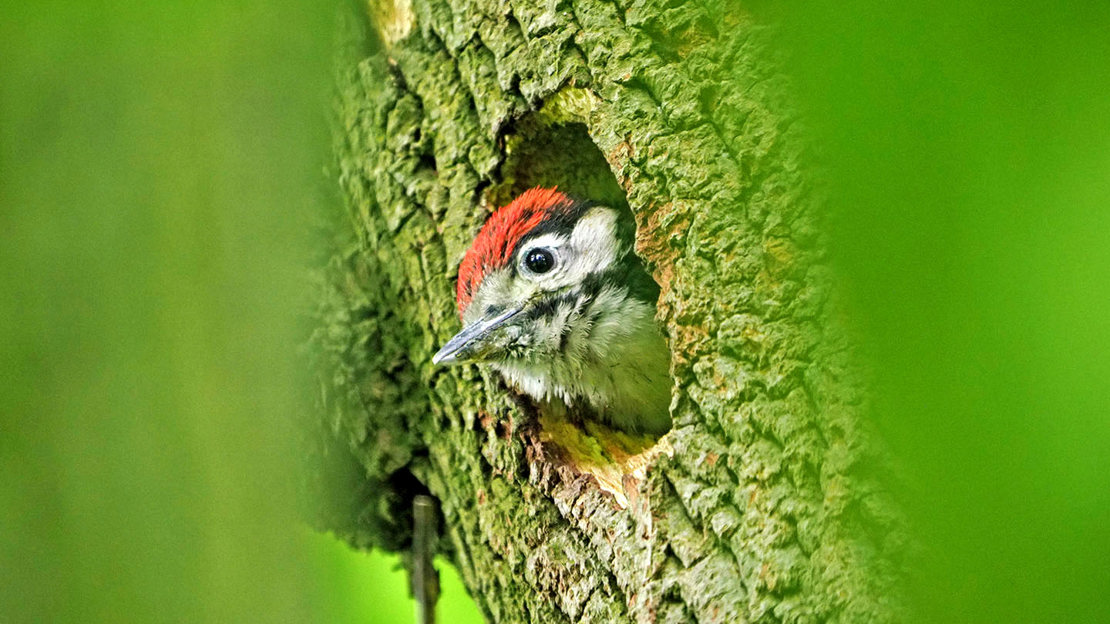
Appearance
These youngsters should be hard to mistake for other birds, but can be told apart from their parents by their full red cap. Adult males only have a small red patch at the back of their head.
When to see
Usually fledge from early June.
Blue tit (Cyanistes caeruleus)
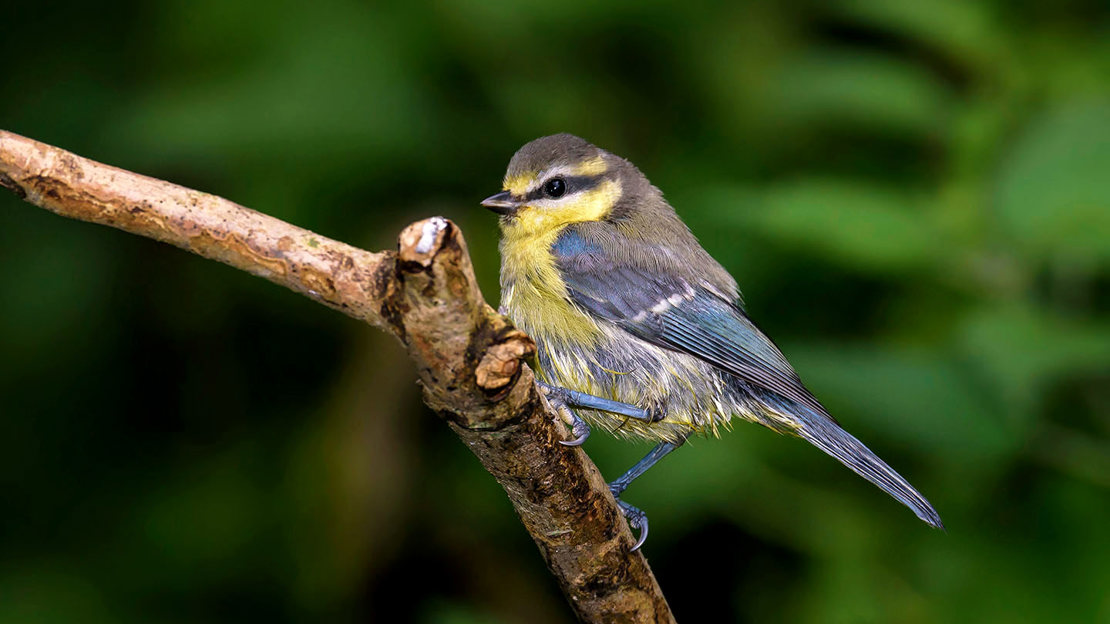
Appearance
Generally a more muted blue and yellow than adults. They also lack the bright white cheeks of adult birds.
When to see
Nesting coincides with the emergence of caterpillars in the tree canopy, with youngsters usually appearing from the end of May.
Great tit (Parus major)
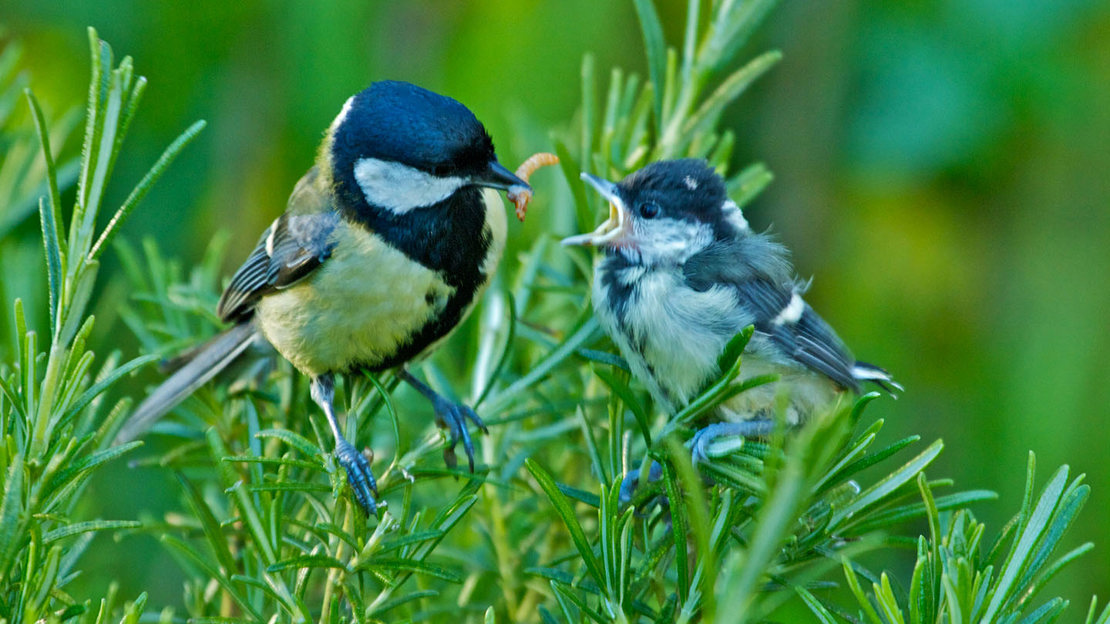
Appearance
While overall duller in colour and less neat than the adults, look for the familiar black cap, white cheeks and beginnings of a black stripe along the tummy.
When to see
Look for fledglings from the end of May.
Wren (Troglodytes troglodytes)
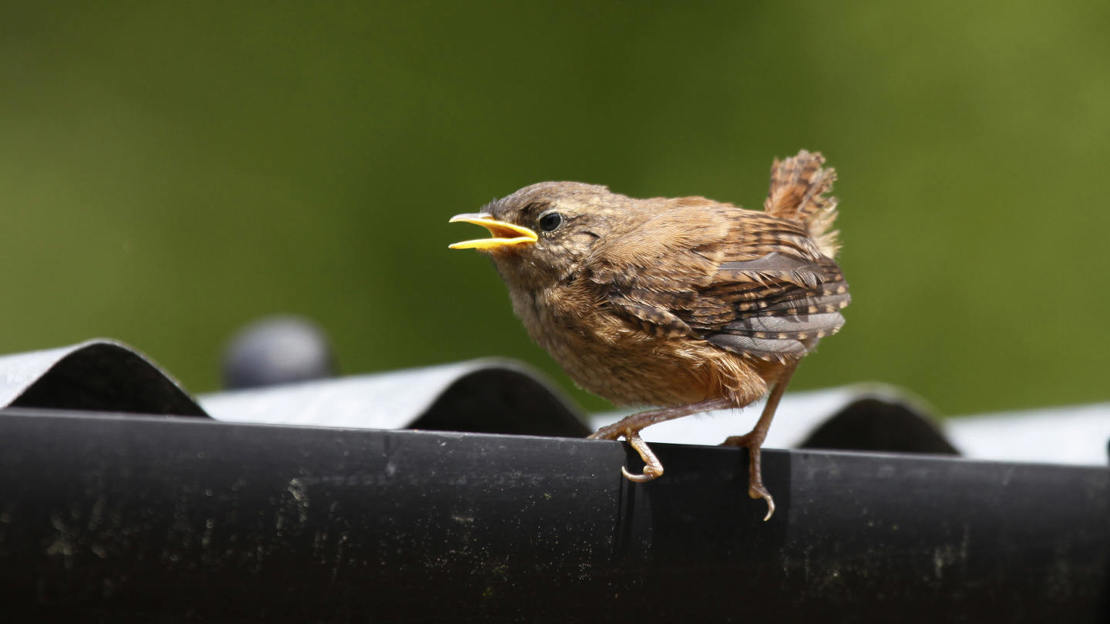
Appearance
These tiny youngsters are round, brown and almost completely tailless. Look for their pale eye stripe and yellow gape. Very young fledglings also sometimes sport eyebrow-like tufts of downy feathers!
When to see
Mostly spotted from early June.
Identify woodland birds on the go
Keep our pocket-sized identification guide to hand on your next walk.
Buy yours now

